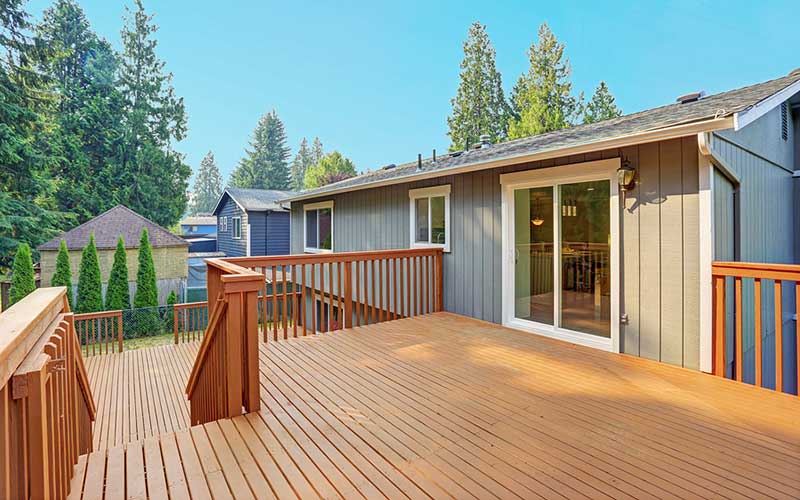
Did you know that because we live in New England your deck’s health declines faster than in other parts of the country? It’s true. When a deck resides in an area with extreme temperature fluctuations from season to season, it ages more quickly.
On average, deck builders recommend an annual inspection for decks ten years old or more. But in New England, any deck older than six years should be inspected annually by a professional. Don’t be fooled by your deck’s waterproofing, it’s still outside and is exposed to rain, sleet, snow and wind. Not to mention intense heat and humidity in the summer. So it’s important to check key deck parts annually so you can safely enjoy your outdoor living space.
May is national deck safety month so read below for tell-tale signs that your deck may need some repair, or possibly a total deck replacement.
Rotting Posts
Rotting happens when wood is soaked with water and then dries. This creates decay, which can be detected by a moldy smell or cracked, soft, or discolored wood. Water gathers at the base of posts supporting your deck so it’s important to check the base of your posts for visible signs of rotting. Since the posts are supporting the entire structure, a rotting post needs to be replaced immediately. And if more than two posts are rotting, think about replacing the entire deck.
The good news is that newer decks are usually built by pouring concrete footers and attaching the posts with brackets to prevent water damage. If your deck is newer, you may have better luck with your posts!
Damaged Joists
Joists stabilize your deck. So if the wood is soft and starting to rot, that’s a problem. You can test whether the wood is soft by pushing a tool into it. If it easily enters, you’ll need to replace that joist. Similarly to damaged posts, you can replace a couple of joists, but if too many are damaged, it might make more sense to invest in a full deck replacement.
Weak Railings
Weak railings aren’t going to collapse your deck, but they’re still a safety hazard. Make sure your railings are strong. First, visually inspect them to see if you can detect rot or decay. If nothing is visible, then gently lean your body on the railing. Decks are supposed to be able to withstand 200 pounds of lateral force so if it easily sways, it’s probably not safe. Remember, people tend to congregate around railings so if they are unsteady it could create a dangerous situation.
Thankfully, if your railings are the only place you’re seeing decay, you can repair them without replacing the whole deck.
Detaching Ledger Board
Ledger board is the framing material that attaches the deck to your home and arguably the most important piece of your deck. It’s critical to inspect regularly to ensure it’s secure. Make sure that it’s properly fastened by looking to see if there’s a gap between the house and the ledger. If so, the bolts may need tightening or worse the board could be deteriorating and would need to be replaced. Always be conservative with the ledger board because if it isn’t fixed, the deck will eventually fall off the house. And you certainly don’t want that scenario! If it’s beginning to pull away from the house, think about replacing your deck.
Stained Deck Boards
Stains are a common problem with wooden deck boards. Initially, the only issue is an aesthetic one. But if they’re not properly treated over time it could lead to rotting and ultimately structural damage. Check for a musty odor, shrinking boards, or fungal growth.
The good thing is that deck boards are relatively easy to replace if there are only a few that are damaged. But it’s always important to find problems early. Some are isolated and can be fixed, like the deck boards, but others are more difficult. A good rule of thumb is when in doubt, consult a professional, as they can see things you can’t.
Now go out and celebrate national deck safety month by checking for signs that your deck needs to be replaced!
